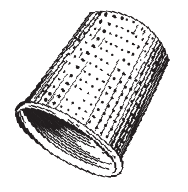First minute: The ailing seagull on the beach flops closer to death.
Second: Both of your children ask what’s wrong. Whyzit? Whenwillit?
Third: You consider lying to them, but decide not to go there. Once you start . . .
Fourth: Never mind him, you say. Now the gull has become a male, guess why.
Fifth: Try diversion. Look, Stack Rock. The kids start running along the wet sand. But for you it’s the gull. You linger, urging him to fly. Or die. Five minutes of your life almost gone, five minutes of your beach vacation, the money saved, the planning, all the wonders of the ocean at your fingertips.
Six minutes: Everyone gets their feet wet in the runoff stream from the beachhead trying to close in on the giant rock, the awesome rock, the Rock of Ages, the one cleft for me. I stop counting minutes, breathe. Kids kick around in the surf. Generally, it’s too cold in Oregon for swimming. Gulls don’t swim, they fly. They float. They’re really shore birds, noisy shore birds. To gull is to fool the gullible. Counting coup . . .
Seven: You’re worried about the white weakling, its beady eyes. Is he faking? Will he still be there when you cross the stream heading back? Is there another way to get up to the house? How will you explain? Death in the Afternoon, Do Not Go Gentle, A Death in the Family or “Because I could not stop . . .”
Eight: Gulls Gone Wild: A Guide to the Oregon Coast’s Most Endearing Mascot. “The seagull is gregarious, opportunistic and omnivorous to the core, and is found at every beach, wayside and parking lot on the Oregon Coast—anywhere there’s food to be had.”
Of course, he’s still there, struggling, all by himself. You know, crows conduct wakes, make little piles of twig offerings for the dead (with ribbons or jewels if they have them), even caw funereal caws.
Nine: You’re making the kids put their shoes on. The socks are wet! Do we have to wear socks? She kicked me. No I didn’t. Yes you did. No I fell, it’s not my fault. What?
Ten: . . .


